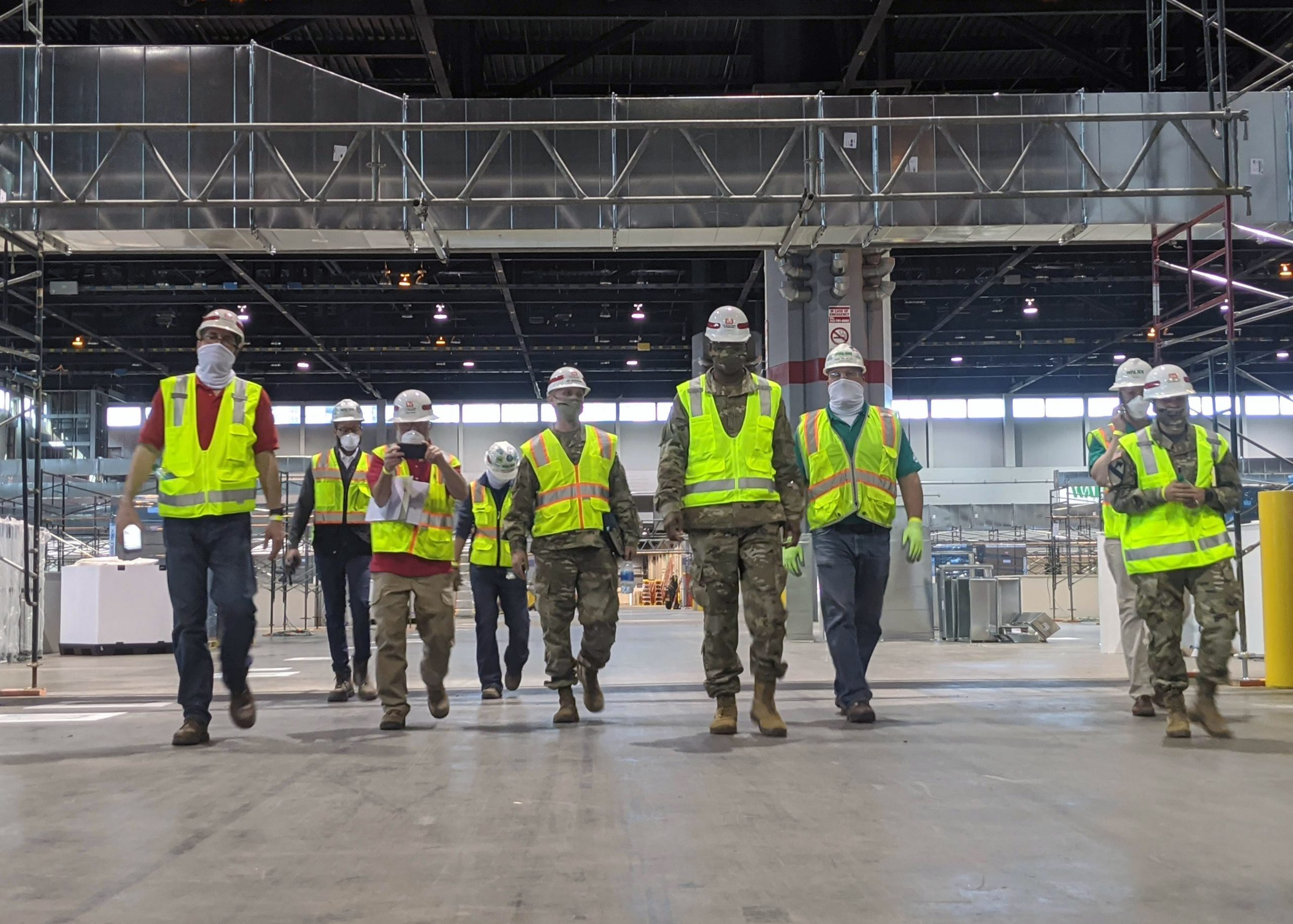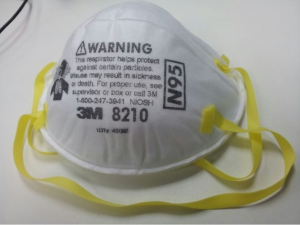4 COVID-19 Impact on the Construction Industry
Thomas Williams
Introduction
The truth is, COVID-19 has had a huge impact on all of us as individuals, as a country, and as a part of the entire world we live in today. Since the virus started spreading in the US in March 2020, it has brought mostly negatives. But in the toughest situations, you can always dig deep and learn from your past experiences to bring about positives. This is true in the construction industry. Even with new rules and regulations across the country, the construction industry has adapted extremely well with the times. Many construction companies were already familiar with strict guidelines given to them by Occupational Safety and Health Administration (OSHA). After receiving guidance from government agencies like the Centers for Disease Control and Prevention (CDC), who made their objectives clear and precise, the construction industry has found ways to thrive while many businesses have struggled to stay afloat. With the help of science and technology, the construction industry has found success because of precise government protocols, quick and strategic adaptation, and long-term adjustments to their daily routines.
Connection to STS Theory
The STS theory that best exemplifies the construction industry during the Coronavirus pandemic is the Actor-Network Theory. This theory states that any phenomenon in our world is the result of interaction between multiple actors, human and non–human. It continues by stating that these different actors are interconnected, and shape the phenomena in a specific way or direction. The Actor-Network Theory is the best representation for the construction industry because of the several actors involved that influence how things are done. The main actors include construction workers and their supervisors, construction sites, and lastly the virus itself. All of these are interconnected because they influence each other on a daily basis. For example, if a construction worker encounters COVID-19, then it alters how the supervisors react and how the job site is structured. On the other hand, how the job site is structured can affect the spread of COVID-19 and then affect the decisions of the supervisors. To state is simply, the Actor-Network Theory is a huge circle where one simple thing (or actor) can have a dramatic effect on everything else around it.
COVID-19 Protocols in Construction, OSHA, CDC, DHEC and PPE Requirements
According to the CDC, businesses need to plan, prepare, and respond to COVID-19. The CDC has several rules and recommendations to follow to maintain a safe work environment, keeping everyone’s health in mind. Some of these new guidelines include temperature checks and attendance logs, social distancing regulations, maintaining a clean workplace, additional PPE requirements, a site-supervisor, and various other rules (Public Works Los Angeles County). The CDC also asks individual workers to follow recommendations to not just keep themselves safe, but the other workers around them safe. The individual worker recommendations include keeping your hands clean, avoiding high risk areas, and staying home if you or anyone you live with feel symptoms. Another huge part of conquering this virus is communication throughout the entire company and maintaining an honest work environment. An honest work environment means that an employee should be able to trust the boss/manager above them, and vice-versa. Communication is key to an honest work environment, as employees should be able to feel comfortable communicating their situation to the boss, without fear of losing their job. Luckily, many construction companies and their employees are accustomed to following rules given to them by OSHA. A part of the US Department of Labor, OSHA has provided guidelines for construction companies for many years. Some typical OSHA guidelines for construction workers include fall protection, confined space rules, fire protection, body and eye wash regulations, and finally PPE. PPE stands for Personal Protective Equipment. OSHA has added several new rules in the past year in response to the COVID-19 pandemic. These include wearing masks and face shields, gloves, and other types of equipment depending on the individual work environment (U.S. Dept. of Labor).
How the Construction Industry Has Adapted/Thrived during COVID-19 (With the help of S&T)

When COVID-19 arrived on the scene earlier last spring, we as Americans were unsure how big businesses and industries would be able to cope with the times. Looking back at it now, we can say the construction industry did extremely well given the situation, and at some points it even thrived. Why is this? Well, if we look back to the days before COVID-19 and analyze the construction industry, there was already and abundance of rules and regulations in place. For example, the N95 mask and face shields were used by several types of construction workers way before COVID-19 was around. Now, it is well known as the best mask to prevent the spread of the virus. This is just one of several examples that the construction industry almost had a head start with these health and safety regulations, and they were better equipped to adapt with the times.
Another positive result for the construction industry is that they stayed essential through all the stages of COVID-19 relief. When most were sent home from their jobs in the first stage of the virus, this allowed the construction companies to come in and do their thing. Many construction companies also called technological related industries and used the slower business climate to improve their business environment that may have been lacking behind. According to engineering.com, a professional website for those in the engineering profession, with more focus on sustainability and green living, many firms found new opportunities to help meet government guidelines. Whether retrofitting a building for improved energy or designing structures for healthier living, embracing those trends may prove to be essential for the firm’s own sustainability (Heimgartner). While working in tandem with their customers and business partners, the construction industry has been able to respect and follow on-going regulations from OSHA and the CDC.. With the help of scientific findings, advanced technology, and the cooperation of everyone involved, these construction companies could continue working while staying safe and keeping the health of everyone at the forefront.
The Long Term Effect of COVID-19 on Construction

The Construction Industry has made some fast and efficient changes to maintain the health and safety of everyone involved. Almost all of these changes are beneficial for companies, and the industry will most likely never be the same. Some of the most drastic changes include redefining job site risk and safety, increased use of technology, more remote work, smaller employee pools, supply chain distributions, longer project time frames, more modular training, and an increase in communication between everyone in the work force (Clemmons). Like I said before, construction workers have been following safety protocols for many years now, but lots of new rules were added due to COVID-19. Some of these new rules involve social distancing policies, controlled access to facilities and equipment, self-monitoring, temperature checks, sanitization regulations, and finally outbreak and response plans. While having to implement these rules, construction company managers and workers have had to turn to technology to make things easier and more efficient. Engineering.com states, “Incorporating remote working options via BIM, drones or robots to assist with social distancing, 4D simulation and other innovations can greatly impact efficiency and productivity” (Heimgartner). A new strategy that has also come about recently is off-site construction. In a time when social distancing has become necessary, off-site construction has proven to be a way to keep things moving. It allows for a controlled environment that makes it easier to follow safety guidelines, and can increase construction times and enhance quality. Technology such as video conferences, construction modules, and working remotely have also been used successfully. Another part of the construction industry that will change in the meantime is having smaller employee pools, i.e. having a smaller amount of workers together in one area at a time. This could also entail having online meetings so everyone does not have to meet in one place to discuss a certain matter. Finally, the most important thing that will change in the world of construction is the enhanced caution of the health and safety of everyone involved, and rightly so.
Conclusion
In conclusion, the construction industry was able to thrive during the harsh times of the pandemic because they successfully followed government protocols, fast and purposeful adaption, and easily adjusting their daily and long-term routines. Although this virus has been tough on everyone, hopefully this industry can be a learning point for many others. Like I have mentioned before, the main goal is to keep everyone safe, no matter who they are. Many of us may have to change our daily routines and adapt quickly with the times, but we are really helping our neighbors as fellow human beings. Through all the bad, hopefully we can all look back and see some good that came out of the year 2020. The construction industry sure did adapt and make changes that made it better for everyone in the long run.
References
Centers for Disease Control and Prevention, What Construction Workers Need to Know about COVID-19, 2020 www.cdc.gov/coronavirus/2019-ncov/community/organizations/construction-workers.html.
Clemmons, Johnny. “SAP BrandVoice: Construction Industry And COVID-19: Responding To The Future Of Work And Life.” Forbes, 25 Nov. 2020, www.forbes.com/sites/sap/2020/11/25/construction-industry-and-covid-19-responding-to-the-future-of-work-and-life/?sh=1cd27a3014e7.
Goodman, Jenn. “The New Normal: 8 Ways the Coronavirus Crisis Is Changing Construction.” Construction Dive, 30 Apr. 2020, www.constructiondive.com/news/the-new-normal-8-ways-the-coronavirus-crisis-is-changing-construction/576681/.
Heimgartner, Jeffrey. “Long-Term Effects of COVID-19 in the Construction Industry.” Engineering.com, 3 Jul. 2020, new.engineering.com/story/long-term-effects-of-covid-19-in-the-construction-industry.
Public Works Los Angeles County. Guidelines for Construction Sites During COVID-19 Pandemic. (n.d.) dpw.lacounty.gov/building-and-safety/docs/pw_guidelines-construction-sites.pdf.
Schaefer, Jonathan. “Study Findings Reinforce Need for Construction Industry to Stay Vigilant and Committed to COVID-19 Restrictions and Protecting Workers.” Construction Law Zone, 20 Nov. 2020, www.constructionlawzone.com/2020/11/study-findings-reinforce-need-for-construction-industry-to-stay-vigilant-and-committed-to-covid-19-restrictions-and-protecting-workers/?utm_source=feedburner.
Speed, Vicki. “Technology Catch-Up: Construction Industry Strives to Adapt, Adopt, Reshape.” Inside Unmanned Systems, 24 Sep. 2020, insideunmannedsystems.com/technology-catch-up-construction-industry-strives-to-adapt-adopt-reshape/.
United States Department of Labor Occupational Safety and Health Administration. Worker Safety Series – Construction | Occupational Safety and Health Administration, (n.d.) www.osha.gov/Publications/OSHA3252/3252.html.
Images
“3M N-95 Mask” by Banej is licensed under CC BY-SA 4.0
“File:Construction continues of Hall B in COVID19 ACF at McCormick Place (50196093326).jpg” by Susan Blair is licensed under CC BY 4.0

